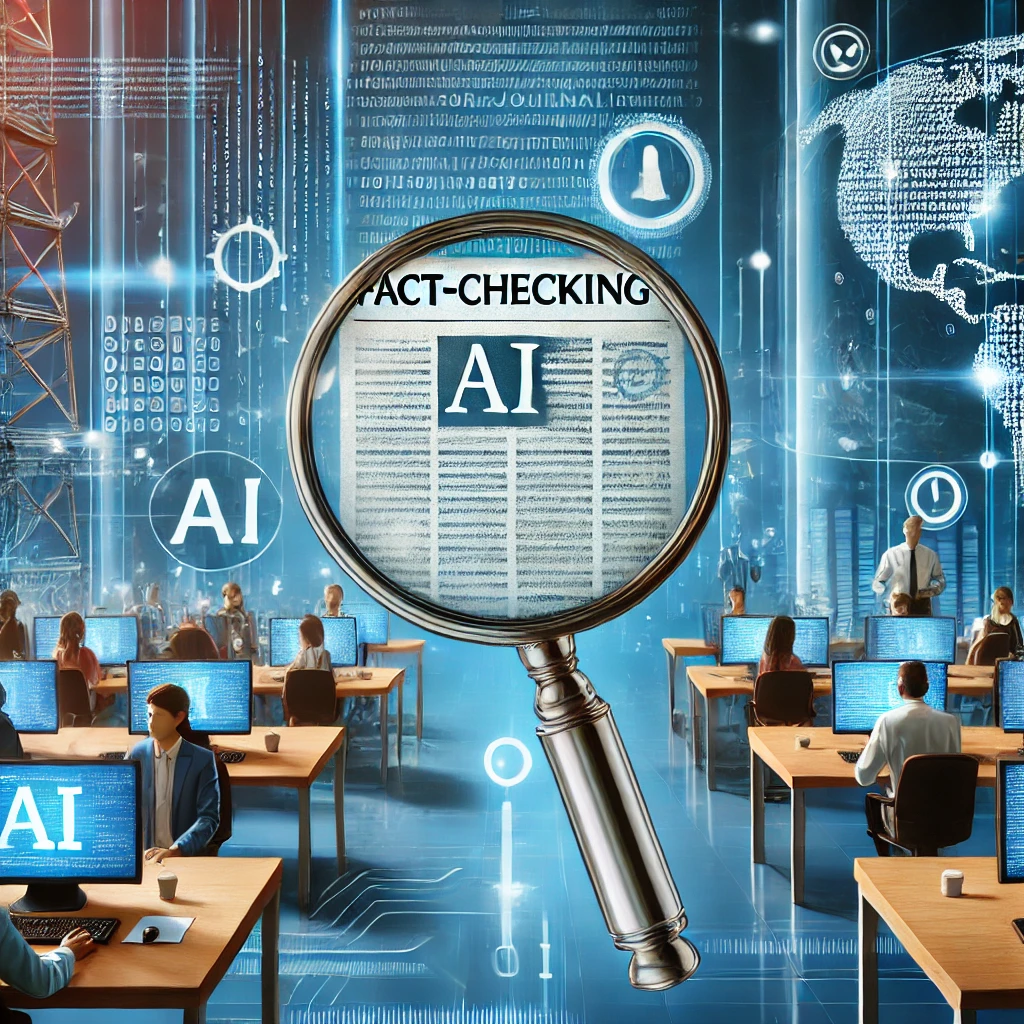Part 1: Fact-Checking in the Age of AI: Enhancing Accuracy in Journalism
In an era where the truth can sometimes seem like a rare commodity, journalists are finding themselves at the forefront of a new kind of battle—one fought not with pens or microphones but with algorithms and artificial intelligence. As the digital landscape grows more complex and misinformation spreads faster than ever before, fact-checking has never been more crucial.
But this isn’t the same old fact-checking that newsrooms have relied on for decades. Today, technology is taking the lead, with AI tools that can sift through mountains of information, detect inconsistencies, and even spot fake videos that might otherwise fool the human eye. The question isn’t just whether we can keep up with the spread of false information but how we can outpace it.
In this evolving landscape, AI offers a powerful ally. From verifying the latest viral claim to ensuring that what we see online is what actually happened, AI is quietly but significantly transforming journalism. This blog explores how AI is being used to enhance accuracy, combat misinformation, and help journalists navigate the complexities of the digital age.
AI-Powered Fact-Checking: A New Frontier
AI-driven fact-checking tools are transforming how journalists and fact-checkers verify information. These tools can quickly analyze vast amounts of data, identifying discrepancies and cross-referencing claims with trusted sources. For instance, Full Fact, an independent fact-checking organization in the UK, has developed AI systems that can scan millions of claims across media outlets, automatically highlighting potential falsehoods. This technology allows fact-checkers to focus on verifying the most critical claims, saving time and resources.
AI effectively identifies false claims at scale in today’s fast-paced news environment. However, there are concerns about using AI for sensitive news stories. The 2024 Reuters Digital News Report emphasizes the need for human oversight to ensure AI’s outputs align with journalistic standards.
The Evolution of AI in Journalism
In journalism, AI has evolved beyond fact-checking to detect deepfakes—realistic but deceitful videos and images. These deepfakes are challenging for journalists, but AI algorithms trained on vast datasets can spot subtle anomalies that evade human detection.
As deepfake technology advances, the tools used to detect these manipulations must also improve. The New York Times highlights that deepfakes have become so realistic that they’re increasingly difficult to distinguish from authentic content, making robust AI detection tools crucial. Without continuous innovation, the spread of misinformation through deepfakes could severely undermine public trust in media.
Emerging AI Tools for Fact-Checking
New AI tools like ClaimReview are enhancing fact-checking by standardizing how fact-checks are formatted. This makes it easier for search engines like Google and Bing to quickly find and display verified information, helping journalists and the public access accurate data more efficiently.
AI in Combating COVID-19 Misinformation
During the pandemic, AI helped fight misinformation. Meedan’s Check tool was used to verify virus-related information. Journalists and fact-checkers collaborated using this AI tool across borders to provide real-time accurate information, showcasing the power of AI in managing global misinformation.
—
In Part 2, we’ll look at how AI is used for real-time fact-checking in live events, discuss the ethics of AI in journalism, and explore new developments like blockchain technology in fact-checking.


Leave a Reply